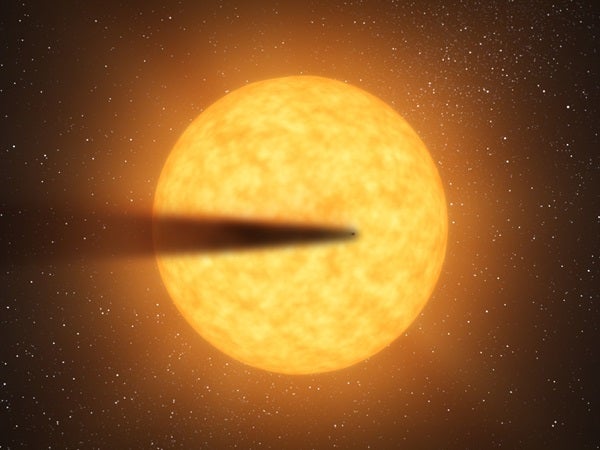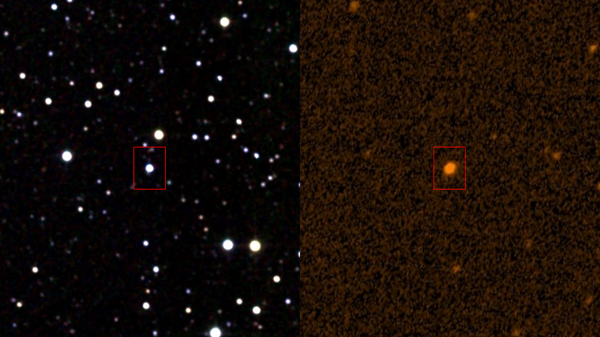While most planets orbit their stars from a safe distance, some see their suns up close and personal. Orbiting far closer than Mercury, these worlds experience extreme temperatures that cause their atmospheres to expand. If the planet is too small, with too little gravity to hold on to the growing atmosphere, it can wind up losing it. A handful of worlds have been spotted with the remnants of their atmospheres trailing along behind them.
“Disintegrating planets can reveal extremely important compositional information, which is the primary reason we are interested in them,” Jake Hanson, a doctoral student at Arizona State University, told Astronomy by email. Hanson, who is studying how exoplanets lose their atmospheres, presented his research in April at the Astrobiology Science Conference in Mesa, Arizona.
A look inside
When scientists see an atmosphere flowing behind its planet, it’s unlikely to be the one the world was born with. That atmosphere was likely lost soon after the planet began its close residence to its star. Instead, Hanson said the molten surface of a disintegrating planet most likely resupplied the atmosphere, as gases escaped from the overheated landscape.
“Depending how much of the planet has already evaporated, we could be looking deep into the remnants of a giant planet or near the original surface of a rocky planet — or near the core of a rocky planet, for that matter,” he said.
Even the best instruments can only peer at the upper layers of the atmosphere surrounding a world beyond the solar system. But these melting worlds may provide the first look at what’s going on deeper down, at the surface.
To help understand what’s happening on these worlds, Hanson first modeled how an exoplanet might look if it was steadily losing its atmosphere at a consistent rate. He found that it was difficult to drain an atmosphere from a planet by the same degree over time. It’s more likely that atmospheres on these worlds build up in large quantities, then suddenly blow off in massive chunks.
“The rock is vaporized into an atmosphere and then, BAM! Bulk ejection,” Hanson said in his presentation. “Then reboot and restart.”
The unusual signal could provide a way to detect worlds too small to be spotted with current instruments, he said. The four disintegrating worlds known to date are small, estimated to have diameters within the size of Earth and the Moon, while their massive comet-like tails suggest they are losing roughly an Earth-mass of atmosphere every billion years.
The sudden shedding of an atmosphere could be one explanation for Tabby’s star, the unusual star whose bizarre signal led some to suggest the presence of an alien megastructure. In 2015, researchers reported unusual changes in the light around KIC 8462852, also referred to as Tabby’s star or Boyajian’s star. Since its discovery, scientists have proposed a myriad of possible causes, ranging from comet swarms to Dyson spheres.
The buildup and bulk ejection of the atmosphere would create a strange signal, “which is why it’s worth considering in the context of Tabby’s star,” Hanson said.
Still, he cautioned that this is a rough explanation rather than a precise one, and one he plans to crunch the numbers on in the near future. A huge atmospheric tail would be necessary to block the light from Tabby’s star, making Hanson suspect the explanation is “unlikely,” though it remains a possibility.
Regardless, disintegrating worlds remain one of the best ways of peering down to a planet’s surface, even if the surface has already left the planet. While researchers can use the size and mass to calculate a planet’s density, that provides only an average. But as the atmosphere trails behind, it provides greater insight into the world it came from. NASA’s upcoming James Webb Space Telescope, planned to launch at the end of 2018, will allow scientists to glimpse the minerals in trailing atmospheres, which would provide insights about the surface.
“This would give us an unprecedented look at exoplanet surface information,” Hanson said











